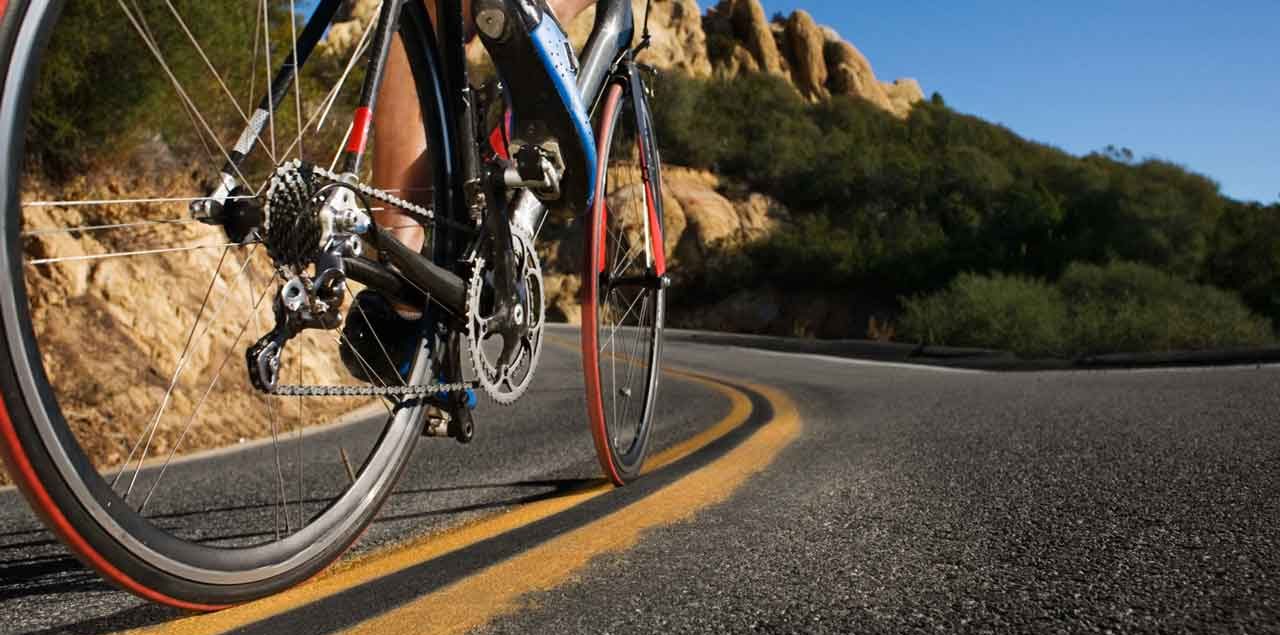Spend 10 Minutes on the Bike, But Go All-Out for a Minute

Alternating your pace while cycling or on a stationary bike can boost your fitness as well as a 45-minute moderate workout. Here's what you should know.
Try this 10-minute routine on a stationary or actual bike:
- Warm up for two minutes
- Go all out for 20 seconds
- Drop down to a slow pace for two minutes
- Sprint again for 20 seconds
- Return to the easy cycling for two minutes
- Sprint
- Then cool down for three minutes
YOU MIGHT ALSO LIKE: The 10-20-30 Workout
According to a study published in PLOS One, that routine boosted fitness as well as a 45-minute moderate workout in a small group of couch-potato men ages 19 to 35.
Those 20-second sprints go a long way.
"Our data show that you can get big benefits from even a single minute of intense exercise,” says Martin Gibala, PhD, professor of kinesiology, McMaster University, who led the research team.
Gibala has been studying the idea of interval training for more than a decade, looking for the most time-efficient routine. The basic idea: If you want to spend less time exercising, you’ll need to push yourself harder to get the same benefit. But you’d be surprised how little time it takes.
The researchers recruited 27 young men to participate, measuring their cardiorespiratory fitness and insulin sensitivity, a measure of their likelihood of developing type 2 diabetes, at the beginning and end of the study. The study lasted 12 weeks.
One group didn’t exercise, the second did the sprinting routine, and a third did a 45-minute pedal at 70 percent heart rate, plus five minutes of warming up and cooling down. Both exercising groups pedaled three times a week.
The 45-minute crowd obviously put in a lot more time, but they ended up with comparable improvements on the health measures. For example, the peak oxygen uptake increased after training by 19 percent in both groups.
The recruits were all sedentary but ranged from 20 to 32 body mass index, which includes healthy, overweight, and obese scores.
Although the study was conducted with sedentary guys, you probably don’t want to start this program without building up some regular comfortable exercise first.
Once you’re exercising you might use the approach to fit more into your time. Instead of going to the gym to pedal on a bike while reading over your lunch hour, you might spend 10 minutes with the sprinting routine and use the freed-up time to:
- Lift weights
- Try a yoga class
- Stretch
- Meditate
- Eat a healthy lunch — after exercising, not right before
Sprinting may sound potentially painful. You can wait 2 to 4 hours to exercise after a significant meal to avoid getting a stich in your side. Work on your abdominal muscles; if a stitch occurs, slow down and steady your breathing.
Don’t just count on your interval routine. You also want to build more exercise into your day. "Climbing a few flights of stairs on your lunch hour can provide a quick and effective workout. The health benefits are significant," Gibala says.
High-intensity exercise may seem especially scary if you have heart issues, but there’s reason for confidence. In one study, a Norwegian team followed more than 4,800 heart patients who engaged in organized exercise at rehabilitation centers, including both high-intensity interval training and moderate exercise. They found that the risk of a heart event was low during both exercise styles.
Check with a doctor or nurse if you feel pain in your chest when you’re active, or if you:
- Had chest pain during the past month
- Lose your balance or collapse when you’re dizzy
- Are taking medication for your blood pressure or heart
Women who are pregnant or have given birth during the past two months should also ask for advice. You might also speak to your medical professionals if you’re dealing with a bone or joint problem.
The bottom line is that you don’t want to slip into a sedentary life.
Updated:
August 01, 2023
Reviewed By:
Janet O’Dell, RN